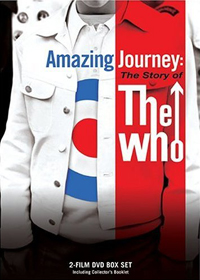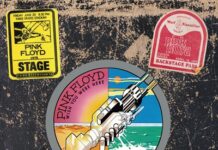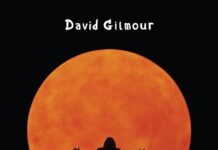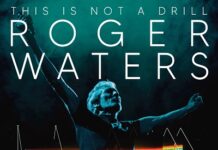Just when you thought The Kids Are Alright was the definitive film about the terrible ‘Oo, along comes Amazing Journey: The Story Of The Who, digging into areas the former had little time for. Interviews with band members, managers, relatives, friends, associates and admirers add the necessary credibility — but it’s the twisted tale itself, dissected and subject to extended intervals along the way that make the journey truly amazing. Part of a two-DVD set (make that three if you pick up the Limited Edition version), Amazing Journey: The Story Of The Who sets the record straight on the rich and wild history on one of rock’s longest running sagas.
John Entwistle is swiftly examined and explained in the first few minutes of the film. His part in the story is integral to the development of the group. Entwistle and Roger Daltrey came together initially, and the bassist’s friend Pete Townshend later joined. From there, the story progresses to the recruitment of wild man Keith Moon. It’s especially interesting to hear how Moonie’s accelerated lifestyle and manic drumming style helped propel the music and projected its sound.
They continued to be called the Detours, the Who and the High Numbers before finally returning to the Who, at the insistence of managers Kit Lambert and Chris Stamp. The name settled and management in tow, they started destroying instruments and gaining a questionable reputation. The film then turns its spotlight on Townshend, who not only emerges as a focal point because of his guitar smashing, but for his skills as a world-class songwriter. The group’s recording career slowly took off amidst internal strife and struggle. Unlike the Beatles and Rolling Stones, the Who suffered from a series of growing pains and miscalculations — elements often attributed to their abrasive manner and notoriety as a dangerous band.
As we learn, it wasn’t really until Tommy that the group were able to break free from their British Invasion constraints and write their own ticket. The spoil of success would, of course, claim the lives of both Moon and, many years later, Entwistle. Townshend faced his own demons, often dazed and confused, but somehow found inner peace. Only Daltrey, in search of his voice and rendered somewhat expendable because he was only the “singer,” was without much controversy and chemical dependence.
The post-Keith Moon years, often neglected in Who books and films, gets a fair and even overview. Kenney Jones has a few words about his experience, practically acknowledging the looming ghost of Moon the Loon. The tragedy of Cincinnati, where 11 fans were trampled to death in a mad rush to gain entrance into a 1979 Who show, receives some well-deserved face time. Ultimately, it is the loss of Moon that stops the band in its tracks. After a tempestuous run, even Jones concedes the only drummer for the Who is Keith Moon.
But, as the film illustrates, the Who continued to reunite, partly to save Entwistle from financial ruin. At the same time, the addition of Zak Starkey, son of Ringo Starr, to the drum throne in the 90s revitalized the group’s edge. Sadly, it took Entwistle’s death to nudge Townshend and Daltrey closer together, resulting in the first bits and pieces of “new” Who music in over 20 years. Their 2006 album Endless Wire reestablished the Who as a viable recording artist, and the amazing journey becomes one of triumph rather than tragedy.
The “Six Quick Ones” feature on the second disc delves into each member’s unique and individual approach to their chosen instrument — Daltrey’s soaring vocals. Entwistle’s thundering bass line, Townshend’s sweeping flamenco-inspired attack and windmill crash chords (And well as his writing), and Moon’s wild and tumble drumming. The group’s impact as a product of pop culture is also discussed before we step into the studio for the 2003 recording session of “Good Looking Boy,” featuring Starkey on drums, John “Rabbit” Bundrick on piano and Greg Lake on bass.
The “Scrapbook” features a classic story about Keith Moon and John Entwistle told by manager Bill Curbishley, a look at the group’s various legal problems, the meaning of “Won’t Get Fooled Again,” the “whole” story behind Cincinnati according to Curbishley, and Noel Gallagher’s experience playing with the Who at the Royal Albert Hall in 2000. If you’re lucky enough to nab the three-disc version, you’re in for a nice surprise. The third disc contains a previously unreleased show from Chicago 1979, filmed just days after the Cincinnati tragedy. Ultimately, Amazing Journey: The Story Of The Who presents as complete a picture as possible in an ongoing venture that may still have a couple decent songs and tours waiting over the horizon.




















